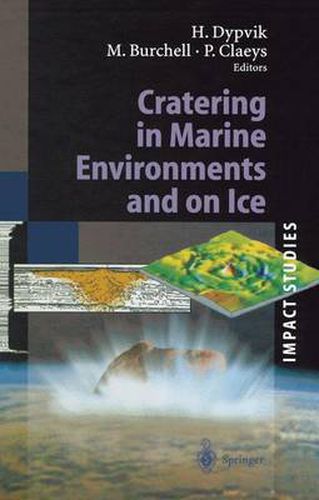Readings Newsletter
Become a Readings Member to make your shopping experience even easier.
Sign in or sign up for free!
You’re not far away from qualifying for FREE standard shipping within Australia
You’ve qualified for FREE standard shipping within Australia
The cart is loading…






Despite their global importance, little is known about the few existing examples of impacts into marine environments and icy targets. They are among the least understood and studied parts of impact crater geology. The icy impacts are also of great importance in understanding the developments of the outer planets and their satellites such as Mars or Europa. Furthermore, the impact mechanisms, crater formation and collapse, melt production and the ejecta distribution are scarcely known for impact on targets other than the classical solid silicates of the continental crust. The reaction of water and ice to impacts clearly deserves a more thorough study. The understanding of impact effects and consequences in the case of aqueous hits, soft sediments and icy targets has not been thoroughly explored and comprises the main focus of this book.
A number of papers in the field of hypervelocity impacts on ice are included. These cover a review of available literature in the field of laboratory studies of such impacts, large impact structures on Titan, predicting impact cratering on a comet nucleus, and a novel report on the survival of bacteria fired at hypervelocity into icy surfaces. This latter paper is concerned with astrobiology and in particular Panspermia (natural migration of life through space).
$9.00 standard shipping within Australia
FREE standard shipping within Australia for orders over $100.00
Express & International shipping calculated at checkout
Despite their global importance, little is known about the few existing examples of impacts into marine environments and icy targets. They are among the least understood and studied parts of impact crater geology. The icy impacts are also of great importance in understanding the developments of the outer planets and their satellites such as Mars or Europa. Furthermore, the impact mechanisms, crater formation and collapse, melt production and the ejecta distribution are scarcely known for impact on targets other than the classical solid silicates of the continental crust. The reaction of water and ice to impacts clearly deserves a more thorough study. The understanding of impact effects and consequences in the case of aqueous hits, soft sediments and icy targets has not been thoroughly explored and comprises the main focus of this book.
A number of papers in the field of hypervelocity impacts on ice are included. These cover a review of available literature in the field of laboratory studies of such impacts, large impact structures on Titan, predicting impact cratering on a comet nucleus, and a novel report on the survival of bacteria fired at hypervelocity into icy surfaces. This latter paper is concerned with astrobiology and in particular Panspermia (natural migration of life through space).